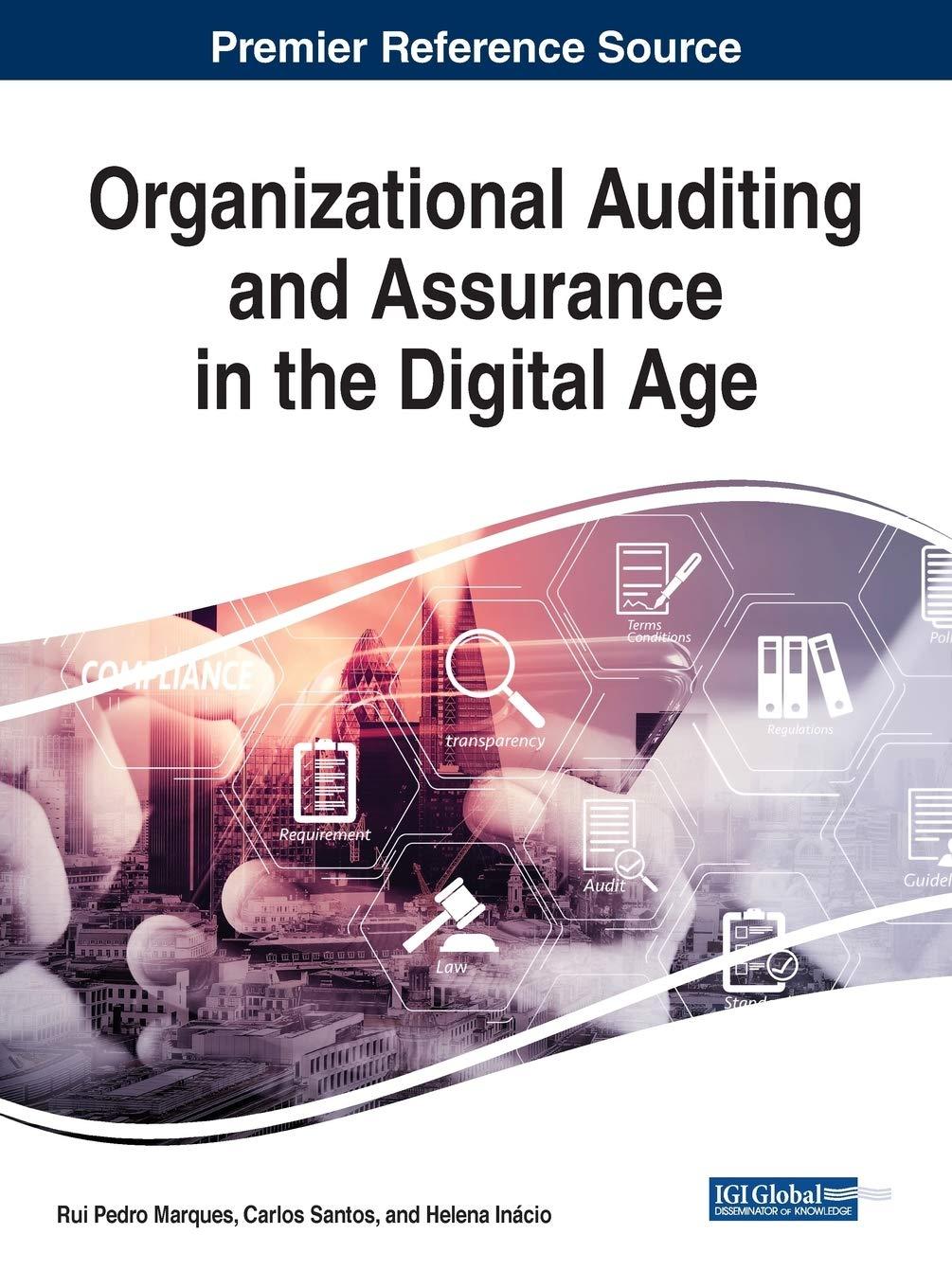Question
Refer to Exhibit 1.10. Briefly explain the seven steps in the framework for ethical decision making. Provide an example of a difficult ethical decision that
Refer to Exhibit 1.10. Briefly explain the seven steps in the framework for ethical decision making. Provide an example of a difficult ethical decision that you have recently made, and use the framework to help you make a decision using the seven steps. (An example might be a decision to challenge a friend who has done something wrong or a decision to report on a person that you know was cheating on an exam.)
below in Exhibit 1.10:
| Steps in Framework | Application |
|---|---|
| Step 1 Identify the ethical issue(s). | The external auditor for Payroll Processors, Inc. believes that the company might go bankrupt. Several clients of the audit firm use the payroll processing services of Payroll Processors. Should the other clients be provided with this confidential information prior to the information being publicly available through the audit reportwhich might be delayed as auditors further assess the potential for bankruptcy? |
| Step 2 Determine the affected parties and identify their rights. | The relevant parties to the issue include the following:
Some of the rights involved:
|
| Step 3 Determine the most important rights. | Many auditors would assess that the rights listed in order of importance are (1) the client to not have confidential information improperly disclosed, (2) other affected parties to receive important information that will affect their operations, and (3) the profession to retain its reputation for conducting quality audits. |
| Step 4 Develop alternative courses of action. | The possible courses of action are (1) share the confidential information with the other clients of the audit firm prior to issuing an audit opinion on the clients financial statements, or (2) do not share that information prior to issuing an audit opinion on the clients financial statements. The audit firm was performing audit work, and the professional standards require that the reservations about Payroll Processors remaining a going concern in their audit report, not in private information given to selected entities. |
| Step 5 Determine the likely consequences of each proposed course of action. | These could include:
|
| Step 6 Assess the possible consequences, including an estimation of the greatest good for the greatest number. Determine whether the rights framework would cause any course of action to be eliminated. | Sharing the information may help other clients move their payroll processing business to other service providers in a more orderly manner and more quickly than would happen if they had to wait until the audit opinion was issued. However, other Payroll Processors customers may be placed at a disadvantage if Payroll Processors does go bankrupt and their payroll processing is disrupted. Payroll Processors employees will lose their jobs more quickly, and its investors are likely to lose more money more quickly. Its right to have confidential information remain confidential will be violated. There may be less confidence in the profession because of discriminatory or unauthorized disclosure of information. Management of other companies may be reluctant to share other nonfinancial information with audit firms. After assessing the relative benefits of disclosing versus not disclosing the information prior to issuing the audit opinion, it appears that the greatest good is served by not sharing the information selectively with current audit clients, but to complete the audit and issue the audit opinion in a timely manner. |
| Step 7 Decide on the appropriate course of action. | The auditor should not share the information prior to issuing the audit opinion. The auditor may encourage Payroll Processors to share its state of affairs with its clients but cannot dictate that it do so. The need for equity and confidentiality of information dictates that the auditors primary form of communication is through formal audit reports associated with the financial statements. |
Step by Step Solution
There are 3 Steps involved in it
Step: 1

Get Instant Access to Expert-Tailored Solutions
See step-by-step solutions with expert insights and AI powered tools for academic success
Step: 2

Step: 3

Ace Your Homework with AI
Get the answers you need in no time with our AI-driven, step-by-step assistance
Get Started


